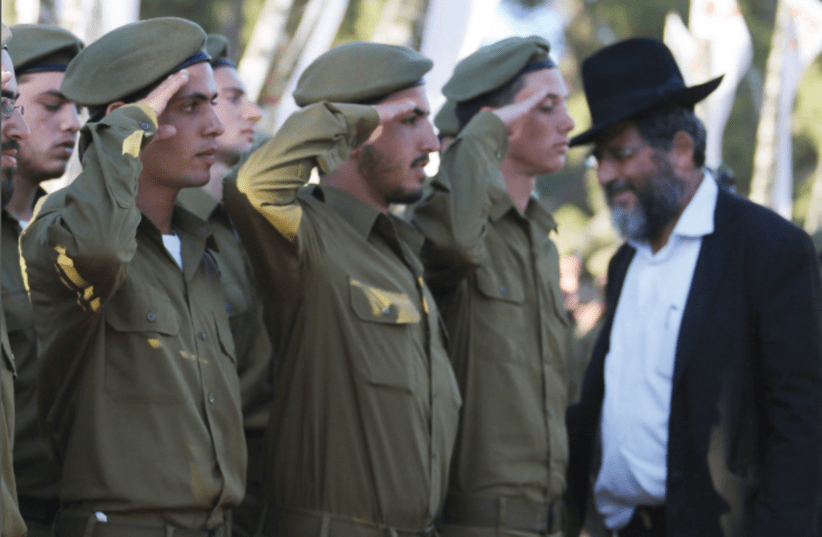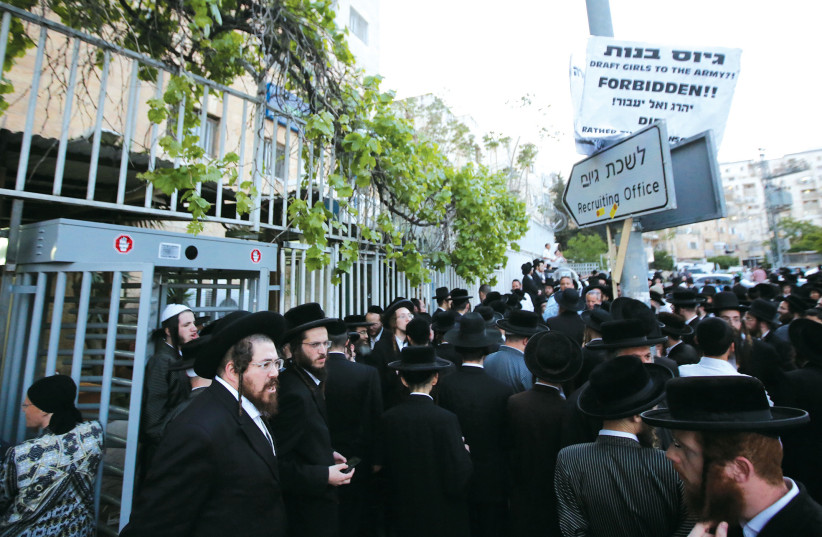It seems as though the hope that the current situation would help to bring the various population groups (or tribes) that make up Israeli society significantly closer is fading.
Undoubtedly, the sudden collapse of our sense of security, which had been created on the basis of our belief that the state would defend and save us should some sudden catastrophe fall upon us, resulted in an unusual surge in social solidarity and mutual assistance.
However, as time has gone by, it transpires that this surge has not gone much beyond trying to help resolve the immediate difficulties confronted by those directly affected by the surprise Hamas attack on the Gaza border communities and, initially, the total lack of an appropriate response by the state, followed by the massive Israeli military attack on the Gaza Strip, involving the call-up of some 350,000 reservists.
The personal decision of several thousand haredi men (most of them in their 30s and early 40s) to volunteer for a shortened course of basic military training, followed by reserve duty, excited many non-haredi Israelis.
More action should be taken in the Hardei community
However, this was a far cry from a real change in the haredi leadership and community as a whole toward accepting the principle of equality in the duties of Israeli citizens. At most, one may view it as a manifestation of the gradual emergence of a group of “modern haredim,” which is a positive development, but at the moment, not much more than that.
Of course, one must also mention the incredible task performed by the voluntary haredi organization ZAKA in the collection of the remains – sometimes mutilated to the point of being unidentifiable – of those murdered and killed on October 7. But ZAKA has been around since 1997, and its recent performance is a magnification of what it has been doing for the last 26 years.
If a national crisis will not push the haredim to contribute more fully to the State of Israel, what will?
Two weeks ago, as I was walking along the paths of the Jerusalem Botanical Gardens, where I volunteer in running the garden’s library, and adding photographs of the wild plants of Israel and its environs to the “flora” website, I came across a young haredi couple from Tiberias. The couple asked me whether I could take their photograph with the small camera they had brought with them.
They stood on a small wooden bridge that crosses a small stream that comes to life in winter. I explained to them that they were standing with their backs to the sunlight, and turned them around so that they faced the light. All this seemingly trivial activity gave rise to a surprising conversation.
The couple identified themselves as North Africans by origin, but not as members of Shas. The husband studies in a kolel, does not have a job, and none of the yeshivot he attended before getting married taught core secular studies (limudei liba). The couple does not own a TV or smartphones. They had come to Jerusalem to pray at the Western Wall, and since the sun was shining, decided to pay their first visit to the Botanical Gardens.
They wanted to know what I do in the garden. I told them that I volunteer there as part of a large group of Jerusalemite pensioners. They also asked what I had done before retiring, and I told them briefly about my education, various jobs I had held, and the books and articles I have written.
I added that I had never been religious and am an agnostic, but that I believe that those who are religious have the absolute right to live the religious life in which they believe, in full. At this point the husband said that though his way of life does not allow him to serve in the IDF, he is grateful to those who serve and defend his, and his family’s lives and that he prays for the safety of those who serve, and for the souls of the fallen.
I told him that, while this is certainly commendable, those of us who are not religious, and many who are national religious, resent the fact that most of the haredim refuse any military or any alternative national service and avoid joining the workforce if they possibly can, in order to study. I added that this was certainly tolerable when the haredim numbered only several thousand at the time of the establishment of the state, but not now, when they number well over one million.
Surprisingly enough, the haredi couple did not argue with me but simply continued asking questions, including whether I agreed that the secular youth of today do not measure up to those of yesteryear. I laughed. “You should never ask an octogenarian to compare what is today with what was when he or she was young; the answer is inevitable,” I replied. “But that is the way of the world, and I expect that the same applies to the haredi society.”
However, what surprised me most was the following question: “If you had to choose between living in a haredi neighborhood or an Arab one, which would you choose?” I had to think for a moment before answering. I explained that my answer would depend on my age. Before I was married, I always sought pluralistic neighborhoods, but that was easier abroad, where I had studied, than in Israel.
In Israel, it is almost impossible for a secular person to live in a haredi neighborhood because haredim do not want seculars living in their neighborhoods, and certainly limit their steps with regards to keeping Shabbat, kashrut, dress code, etc. Regarding an Arab neighborhood, it depends on the community; a secular Arab neighborhood would certainly be simpler than a religious one. However, in recent years there has been a security situation that one must consider.
When my children were growing up, the question was also whether there were suitable secular educational institutions and extracurricular activities for children and youths in the neighborhood. In old age, one is inclined to seek the familiar, and the company of persons with similar backgrounds to one’s own, and all this is irrespective of one’s basic attitude to pluralism.
The couple seemed fascinated by my reply. It was obvious to me that they were asking questions to which they really wanted to hear the answers, and that the questions were not spiteful or vexing.
Before we parted, I wished the couple, who I understood were as yet childless – that before long they would celebrate the pidyon haben (redemption of the firstborn son). They answered “be’ezrat Hashem” (please God) and then added: “There should be more seculars like you.”
In fact, we had hardly agreed about anything, but the fact was that we had spoken and listened to each other out of sincere curiosity and with mutual respect, rather than hurling accusations at each other, which is what made this conversation different.
The problem is that conversations like the one we had – which could perhaps start changing the attitudes of haredim and seculars toward each other – are rare, both because neither side seeks them, and because the haredi leadership does not encourage them for fear of losing control of their flock. It is our loss.
The writer worked in the Knesset for many years as a researcher and has published extensively both journalistic and academic articles on current affairs and Israeli politics. Her most recent book, Israel’s Knesset Members – A Comparative Study of an Undefined Job, was published by Routledge.

